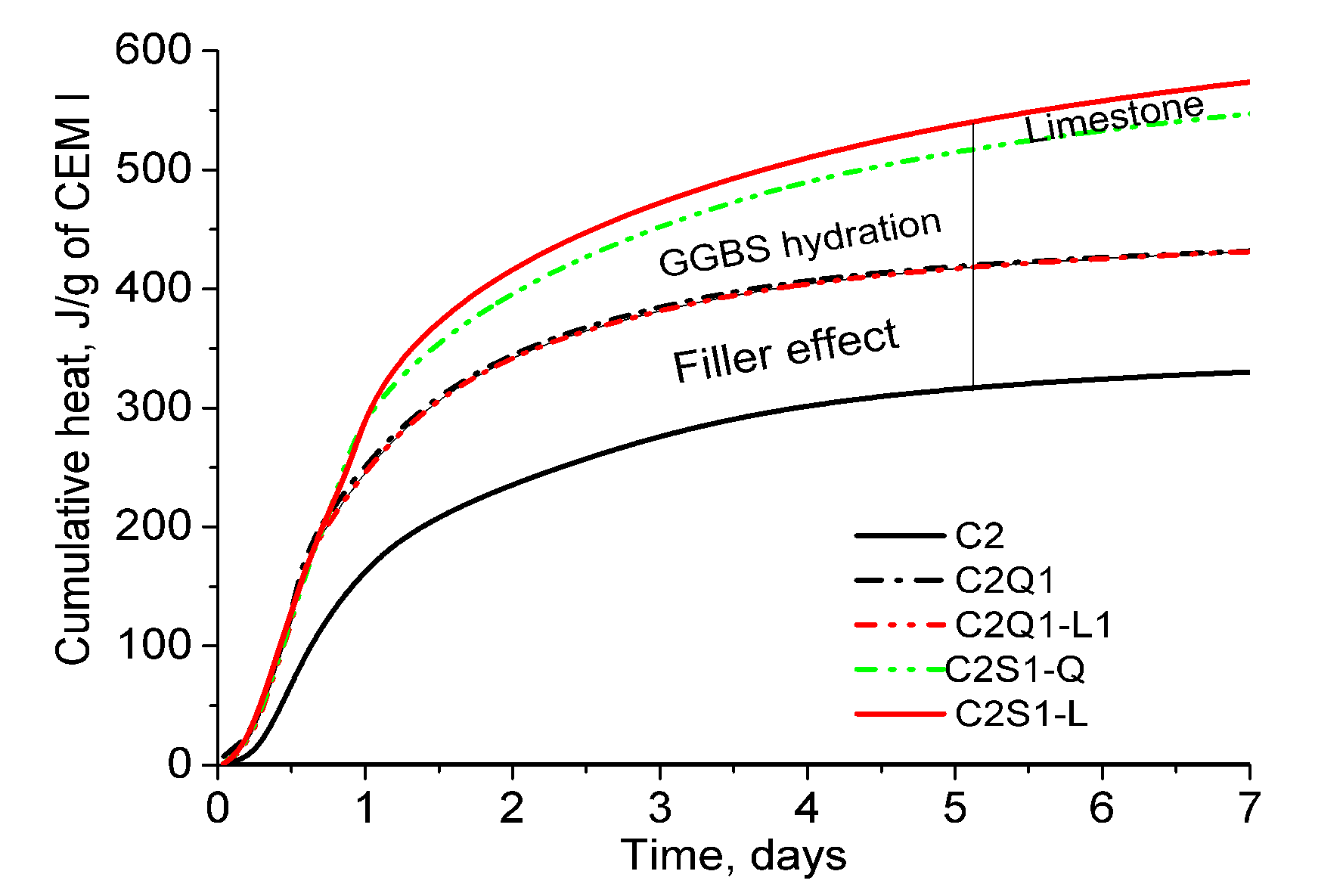Influence of component fineness on hydration and strength development in ternary slag-limestone cements
DOI:
https://doi.org/10.21809/rilemtechlett.2019.89Keywords:
Low carbon cement, Ternary blended cement, Limestone, Fineness, HydrationAbstract
The quest for sustainable alternatives to Portland cement has led to the exploration of a range of materials or their combinations, often with the aim of exploiting synergies in reactions or particle packing to maximize performance. Simultaneous optimization of both presents a viable option to increase the efficiency of cementitious materials. The objective of this study was to evaluate the effect of varying the fineness of the constituents in ternary blends of CEM I – granulated ground blast furnace slag (GGBS) - limestone on hydration kinetics and strength development.
Eight (8) ternary cement mixes were tested at 0.5 water/binder (w/b) ratio. Hydration was followed by isothermal conduction calorimetry and setting time. In addition, X-ray powder diffraction, thermogravimetric analysis and compressive strength development up to 180 days of curing were assessed. The efficiency associated with changing the fineness of each component was evaluated in terms of the net heat of reaction and compressive strength. The results show that fine CEM I is critical for hydration at early age, and this is reflected in the compressive strength accordingly. The benefits associated with finer GGBS and similarly limestone depend on the fineness of the other constituents in the blend. Optimization of these should consider the inter-dependencies in terms of kinetics and microstructure development.

Downloads
Published
How to Cite
Issue
Section
License
Authors retain copyright of the articles published in RILEM Technical Letters and grant the journal the right of first publication with open access. The work is simultaneously licensed under Creative Commons Attribution 4.0 International License (CC BY 4.0) that allows others to share and adapt the work under the following terms: 1) a proper attribution is given in a form of bibliographic record with the DOI link directing to RILEM Technical Letters; 2) a link to the license is provided; 3) the changes (if any) are indicated.









